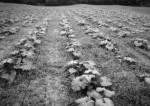Advertise Follow Us
Items Tagged with 'Pumpkins'
ARTICLES
3 Alternative No-Tilled Crops to Boost Your Bottom Line
Grain sorghum and winter canola have growing markets, and no-tilled vegetables can help growers tap into the farm-to-table movement.
Read More
Multifaceted Cover Crops Reward No-Tiller
Virginia “never-tiller” Paul Davis sees a faster increase in soil organic matter, a reduction in applied nitrogen and improved yields from cover crops.
Read More
What I've Learned from No-Tilling
Develop Market Strategies Around Successful No-Tilling
With small fields, rocks, hills and many crops, this Maine grower cashes in on the many benefits of no-tilling
Read More
Pumpkins To Christmas Trees
This no-till operation finds big cash crop benefits from no-tilling pumpkins.
Read More











